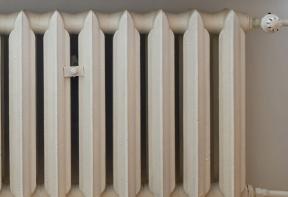A guide to household heating
What are your options when your heating system calls it quits?
”That’s not good” is precisely the kind of thing I didn’t want to hear the technician say when he was in the middle of the annual cleaning and inspection of my heating system. “Your tank is leaking. I’m going to have to red-tag it,” he said, wiping his oily hands on an even oilier rag as he explained the problem.
With a red tag on the inflow pipe, the oil company wouldn’t fill up the tank on their next scheduled visit. Eventually it would run dry and the boiler wouldn’t be able to heat the water that runs through our radiators. With fall fast approaching, we had no choice. Something had to be done to fix the problem. But we did have plenty of options: we could replace the tank and upgrade our inefficient, 70-year-old boiler with a newer model; we could eliminate the need for an oil tank by converting to a natural gas boiler, which would be relatively easy since we already had a gas line for hot water; we could rip out the rads, boiler and oil tank, then replace everything with electric baseboard heaters; we could even install ductwork for a forced-air furnace, although that’s a task not many steps removed from gutting the building.
My hydronic system with the leaky oil tank put me in the minority, but here’s a look at the more common heating systems available on the Canadian market and the bells and whistles you can add when it comes time to replace your heating system.
A lot of hot air
Two-thirds of all Canadian homes are heated with forced-air furnaces; of those, two-thirds are fired by natural gas, and the remainder by oil or propane or heated electrically. These systems are popular for a number of reasons, primarily their ability to heat a house quickly: turn up the temperature on your thermostat, and seconds later warm air comes blowing out of the registers. The ductwork can also be used for air-conditioned cooling in summer, and a forced-air furnace can easily be equipped to multi-task as an air filter, humidifier and/or fresh-air ventilator. On the fuel side, the gas line required for a gas-fired furnace will also provide fuel for your stove and barbecue, heat your hot water, and even supply a warm, soothing fireplace with the flick of a switch.
On the downside, the air blowing out of your vents can feel drafty and may circulate dust. The ducts can also carry noise from the furnace and blower throughout the house.
If your current furnace is older than your VCR, then it’s probably a “conventional” model that has an annual fuel utilization efficiency (AFUE) of only 60 to 65 per cent. What that means is that for every $1 you spend on fuel, 35¢ to 40¢ goes up the chimney as waste exhaust gases. Since 1995, the minimum efficiency level for furnaces sold in Canada has been 78 per cent.
Today, there are two furnace types on the market. The first are the “mid-efficiency” models that are about 80 per cent efficient. Simply put, these have a combustion chamber below a heat exchanger that warms the air the blower circulates through your heating ducts. The lighter-than-air combustion gases vent through your chimney.
Furnaces in the second category, known as high-efficiency or “condensing” furnaces, are 90 per cent efficient or better. Think of a condensing furnace as a regular furnace with a built-in heat recycler. “A condensing furnace has a secondary heat exchanger,” says Ed Seaward of Union Gas in Toronto. The additional heat exchanger “draws the maximum amount of heat out of the flue gases before they exit the chimney.” In the process, these gases cool to the point that they condense, thus the name. The resulting water drains through the floor and the remaining gas is vented through a horizontal pipe in an exterior wall.
Although the sticker price on a mid-efficiency furnace for a typical home may be $1,000 or so cheaper than a comparable-sized high-efficiency model, you can only make an accurate cost comparison by calculating the operating expenses over the lifetime of the furnaces–typically 15 to 20 years. A 10 per cent difference in your monthly gas bill can quickly add up to the initial price difference between the two, particularly if fuel prices rise.
Jump to a section
- Page 1 : What surprises you can expect from your furnace
- Page 2 : Forced air and electric furnaces
- Page 3 : Hydronic heating systems and other alternatives
- Page 4 : Various upgrades to your existing furnace
To leave a comment, please log in












No comments